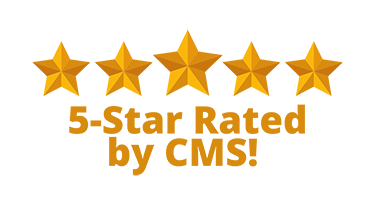OT and Visual Rehabilitation Therapy
Occupational Therapy is a unique healthcare profession concerned with people’s ability to independently participate in their meaningful daily activities or “occupations.”
Occupational Therapists help people with low vision impairment who have a loss of ability to perform necessary activities of daily living in the following ways:
- Teach people to use their remaining vision as best as possible to complete activities
- Help modify activities so they can be completed even with reduced vision
- Train people in the use of adaptive equipment to compensate for vision loss
- Create a safe home environment to prevent falls and injuries
Therapists also work closely with the doctor. They help determine if any other factors may interfere with the use of equipment, ie… arthritic joints, upper and lower extremity weakness, and the lack of endurance.
View BrochureWhat is Low Vision?
Low vision is a visual impairment, not correctable by standard glasses, contact lenses, medicine, or surgery, that interferes with a person’s ability to perform everyday activities. You may have low vision if you can’t see well enough to do things like:
- Read
- Drive
- Recognize faces
- See the television or computer screen
What Causes Low Vision?
Low vision can result from a variety of diseases and injuries that affect the eye. Many people with low vision have age-related macular degeneration, cataract, glaucoma, or diabetic retinopathy. Age-related macular degeneration accounts for almost 45 percent of all cases of low vision.
How Does Low Vision Affect People’s Lives?
People with low vision experience physical, economic, and psychological changes that diminish their quality of life. Without assistance and training, people may have difficulty using low-vision devices and completing necessary daily living tasks such as:
- Grooming
- Meal Preparation
- Financial Management
- Home Maintenance
- Shopping
- Reading
- Community and leisure activities
- Reading labels, books, and newspapers
The Primary Goal of the Visual Rehabilitation Program is to:
- Provide education about the functional implications of visual impairment
- Manage psychosocial issues
- Teach visual scanning skills that optimize the use of remaining vision
- Use both optical and non-optical assistive devices during self-care performance
- Environmental modifications include the management of lighting, contrast, and glare
- Introduce the use of high and low-technology devices for self-care and leisure activities
- Mobility training
- Home safety recommendations
- Referral to community resources and support groups





